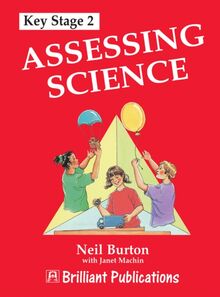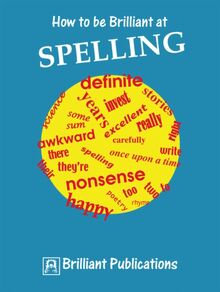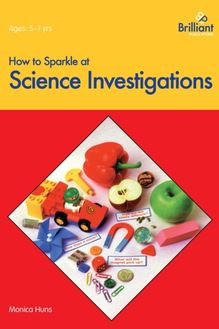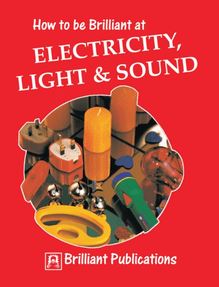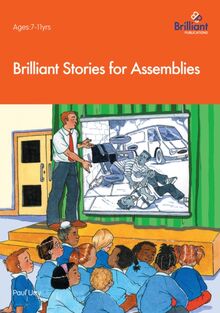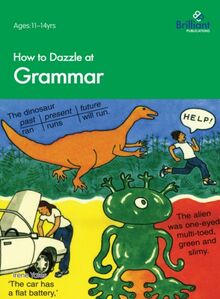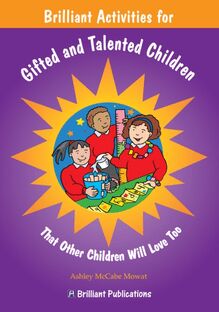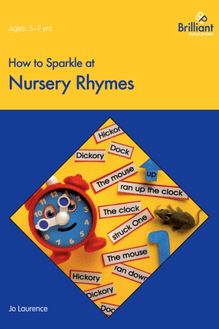-
 Univers
Univers
-
 Ebooks
Ebooks
-
 Livres audio
Livres audio
-
 Presse
Presse
-
 Podcasts
Podcasts
-
 BD
BD
-
 Documents
Documents
-
- Cours
- Révisions
- Ressources pédagogiques
- Sciences de l’éducation
- Manuels scolaires
- Langues
- Travaux de classe
- Annales de BEP
- Etudes supérieures
- Maternelle et primaire
- Fiches de lecture
- Orientation scolaire
- Méthodologie
- Corrigés de devoir
- Annales d’examens et concours
- Annales du bac
- Annales du brevet
- Rapports de stage
La lecture à portée de main
Vous pourrez modifier la taille du texte de cet ouvrage
Découvre YouScribe en t'inscrivant gratuitement
Je m'inscrisBrilliant Activities for Gifted and Talented Children , livre ebook
Découvre YouScribe en t'inscrivant gratuitement
Je m'inscrisEn savoir plus
Vous pourrez modifier la taille du texte de cet ouvrage
En savoir plus

Description
Informations
| Publié par | Andrews UK |
| Date de parution | 28 août 2012 |
| Nombre de lectures | 0 |
| EAN13 | 9780857475596 |
| Langue | English |
Informations légales : prix de location à la page 0,0574€. Cette information est donnée uniquement à titre indicatif conformément à la législation en vigueur.
Extrait
Title Page
Brilliant Activities for Gifted and Talented Children
That Other Children Will Love Too
Ashley McCabe Mowat
Publisher Information
Originally published by
Brilliant Publications
Unit 10, Sparrow Hall Farm, Edlesborough, Dunstable, Bedfordshire, LU6 2ES
Enquiries: 01525 222292
e-mail: info@brilliantpublications.co.uk
Website: www.brilliantpublications.co.uk
Digital version converted and published in 2011 by
Andrews UK Limited
www.andrewsuk.com
Written by Ashley McCabe Mowat
Cover design by Lynda Murray
Illustrated by Kirsty Wilson
© Ashley McCabe Mowat 2003
First published in the UK in 2003, reprinted 2005, 2006, 2008, 2009
The right of Ashley McCabe Mowat to be identified as the author of this work has been asserted by her in accordance with the Copyright, Design and Patents Act 1988.
Certain indicated sections may be printed/photocopied by use by individual teachers for class use, without permission from the publisher and without declaration to the Publishers Licensing Society. The materials may not be reproduced in any other form or for any other purpose without the prior written permission of the
publisher.
About the Author
Ashley M. Mowat, Gifted Educator and Consultant (M Ed Gifted Education)
Ashley Mowat grew up in the southern states of America and was a student in the gifted programme from the age of 8. She received a BA in Early Childhood Education, a BA in Elementary Education and studied Psychology at Converse Women’s College in South Carolina. Following university, Ashley continued her education at Converse, receiving a masters degree in Gifted Education. During this time, Ashley taught in an inner city school and completed a thesis on Underachieving Gifted Males. She also planned and implemented a curriculum for the top 100 gifted students in her area for the Athena Institute, a summer programme for gifted students.
Ashley moved to England, married, and in 1999 taught Key Stage 1 at Gateway School in Great Missenden, Buckinghamshire. The following year, she piloted a gifted programme in the school. She spent the year writing and implementing a themed curriculum dealing with issues of the gifted and talented. The programme has been a great success. Ashley has organized Creative and Critical Thinking Workshops at Gateway during the school holidays and taught at various summer programmes for gifted pupils. Ashley teaches at Gateway part-time. She has provided INSET training days for teachers in schools involved with the Excellence in Cities programme and works with the National Association for Gifted Children (NAGC) on their website.
Ashley is available to provide Inset training days, and workshops for children. She can be contacted direct via email (amm_gifteded@hotmail.com) or via Brilliant Publications.
Introduction
Teaching Gifted Children is becoming an increasingly important topic in the UK. A very confusing issue for most teachers is just where to begin! You already have so much to do, and probably can’t work out when you are going to have time to include activities for Gifted and Talented Children! However, it is extremely important to reach these children, as they are quite often children who fall behind, lose their confidence and become underachievers.
This book will help you to make a start. It is designed to give you ideas for activities that you can use in your classroom. The activities can be modified to suit ages from 6 and up. The work that the children produce will be extremely different because the activities allow room for creativity and open-ended answers. I have based the activities on Bloom’s Taxonomy and the Cognitive/Affective Domains of Creative Thinking.
Bloom’s Taxonomy of Educational Objectives has been widely adopted as a model for conceptualizing higher level thinking skills for gifted learners. Although originally developed for a quite different purpose (to classify instructional objectives and test items in a hierarchical fashion), practitioners began to relate the levels of the Taxonomy to the teaching of thinking skills for gifted and talented youth or for children in general. The model now presents a hierarchy of thinking operations whose highest levels are analysis, synthesis and evaluation and can provide the basis for exciting the child’s intellectual processes. You will find a chart explaining these levels here . The activities in this book will stretch the children to think at the three highest levels.
E. Paul Torrance developed the faces and forms of creativity through the Cognitive and Affective Domains. In the Cognitive category are Fluent Thinking, Flexible Thinking, Original Thinking and Elaborative Thinking. In the Affective category are Curiosity, Imagination, Risk-taking and Complexity. I have developed the activities in this book to reach all of these types of thinking skills, and have outlined this for you here .
Gifted Children are not the only children who will benefit from this book. There are activities that cover many types of creative and critical thinking skills that will enable all children to develop their cognitive processes. I think you will find that the best part about this book is that your children will thoroughly enjoy the activities. You could stretch some of the activities out for days or, in the Brainteaser section, just have a quick warm-up to spark interest and excite the brain! You will also have the confidence of knowing that you are doing something extra in your classroom that really helps all of your children THINK!
Bloom’s Taxonomy
Bloom’s Taxonomy describes six levels of thinking, arranged sequentially from least to most complex.
1.Knowledge is simply recall. Students can say that they ‘know’ something if they can recall it, recite it, or write it down.
2.Comprehension means that students can say what they ‘know’ in their own words. Retelling a story, stating the main idea, or translating from another language are several ways in which students can demonstrate that they ‘comprehend’ or understand what they have learned.
3.Application means that students can apply what they have learned from one context to another. For example, they may be required to decide when to apply mathematical concepts to real-life situations.
4.Analysis means that a student can understand the attributes of something so that its component parts may be studied separately and in relation to one another. Asking students to compare and contrast, categorize, and/or recognize inferences, opinions, or motives would give them experience in analysis.
5.Synthesis requires students to create a novel or original thought, idea, or product. All of the activities we call ‘creative thinking’ give students experience with synthesis. Also, when students can take bits and pieces of several theories or combine ideas from different sources to create an original perspective or idea, they are thinking at a synthesis level.
6.Evaluation gives students opportunities to judge what they have analyzed.
Bloom’s Taxonomy Chart
Knowledge
Comprehension
Application
Analysis
Synthesis
Evaluation
Remembering previously learned material
Ability to grasp the meaning of material
Applying concepts and principles to new situations
Breaking material down into component parts
Pulling parts together in a new whole
Ability to judge the value of material
Lowest level of learning
Interpreting the material
Applying laws and theories to practical situations
Understanding the organizational structures
Formulating new patterns and structures
Use of definite criteria for judgements
Listing learned information
Seeing relationships among things
Solving mathematical problems
Analysis of relationships between parts
Abstract relationships
Value judgements based on clearly defined criteria
Bringing to mind appropriate material
Projecting effects of ideas
Constructing charts and graphs
Recognition of organizational principles involved
Communicating an idea in a unique way
Highest learning outcome
Recalling information
Communicating an idea in a new or different way
Demonstrating correct usage of method or procedure
Requires understanding of both the content and structural form
Creating new or original things
Use of cognitive and affective things together
Bringing to mind stored knowledge
Lowest level of understanding
Applying rules, methods, concepts, principles, laws, theories
Analyzing the elements
Taking things and patterning them in a new way
Solut
-
 Univers
Univers
-
 Ebooks
Ebooks
-
 Livres audio
Livres audio
-
 Presse
Presse
-
 Podcasts
Podcasts
-
 BD
BD
-
 Documents
Documents
-
Jeunesse
-
Littérature
-
Ressources professionnelles
-
Santé et bien-être
-
Savoirs
-
Education
-
Loisirs et hobbies
-
Art, musique et cinéma
-
Actualité et débat de société
-
Jeunesse
-
Littérature
-
Ressources professionnelles
-
Santé et bien-être
-
Savoirs
-
Education
-
Loisirs et hobbies
-
Art, musique et cinéma
-
Actualité et débat de société
-
Actualités
-
Lifestyle
-
Presse jeunesse
-
Presse professionnelle
-
Pratique
-
Presse sportive
-
Presse internationale
-
Culture & Médias
-
Action et Aventures
-
Science-fiction et Fantasy
-
Société
-
Jeunesse
-
Littérature
-
Ressources professionnelles
-
Santé et bien-être
-
Savoirs
-
Education
-
Loisirs et hobbies
-
Art, musique et cinéma
-
Actualité et débat de société
- Cours
- Révisions
- Ressources pédagogiques
- Sciences de l’éducation
- Manuels scolaires
- Langues
- Travaux de classe
- Annales de BEP
- Etudes supérieures
- Maternelle et primaire
- Fiches de lecture
- Orientation scolaire
- Méthodologie
- Corrigés de devoir
- Annales d’examens et concours
- Annales du bac
- Annales du brevet
- Rapports de stage
